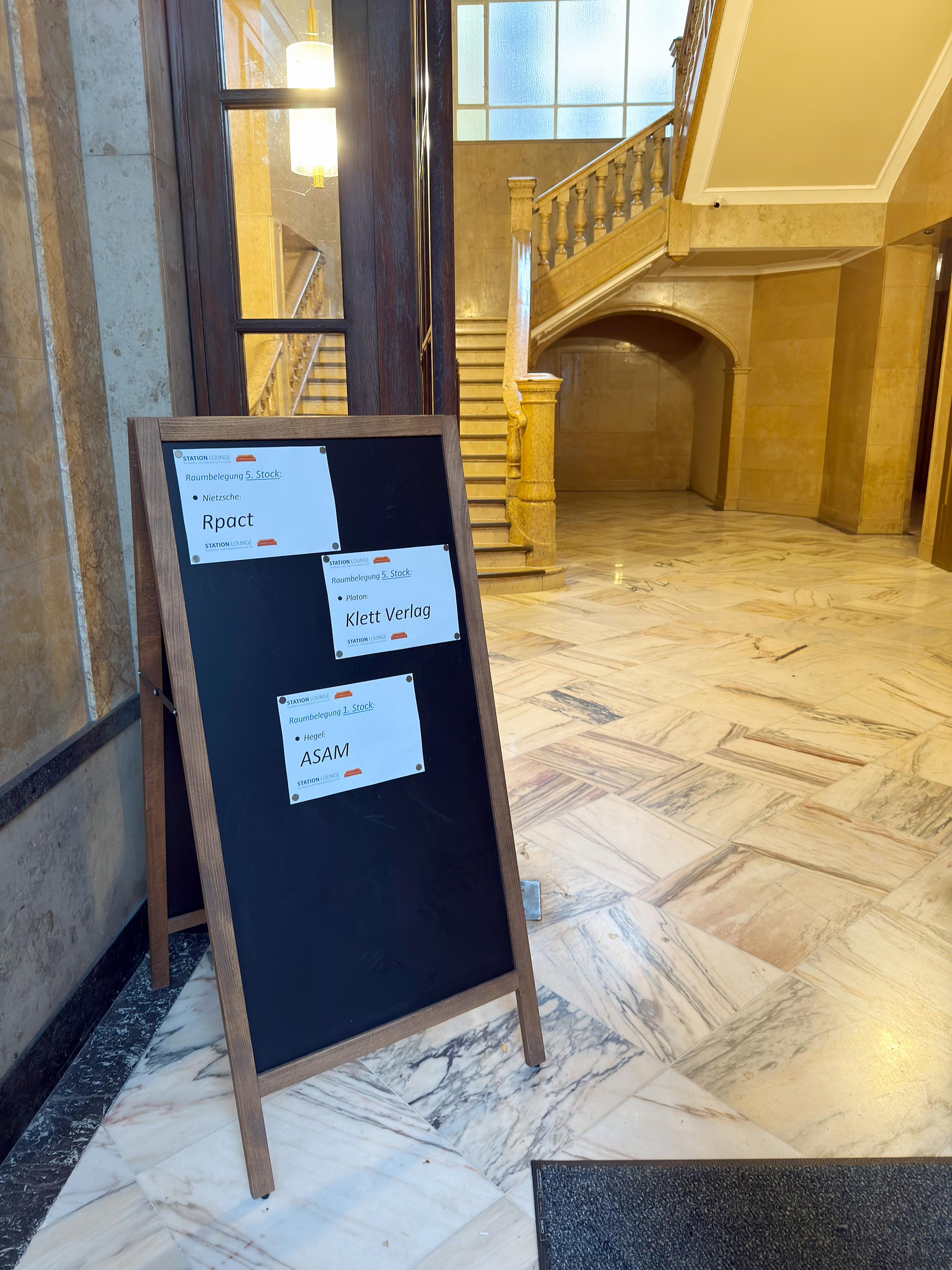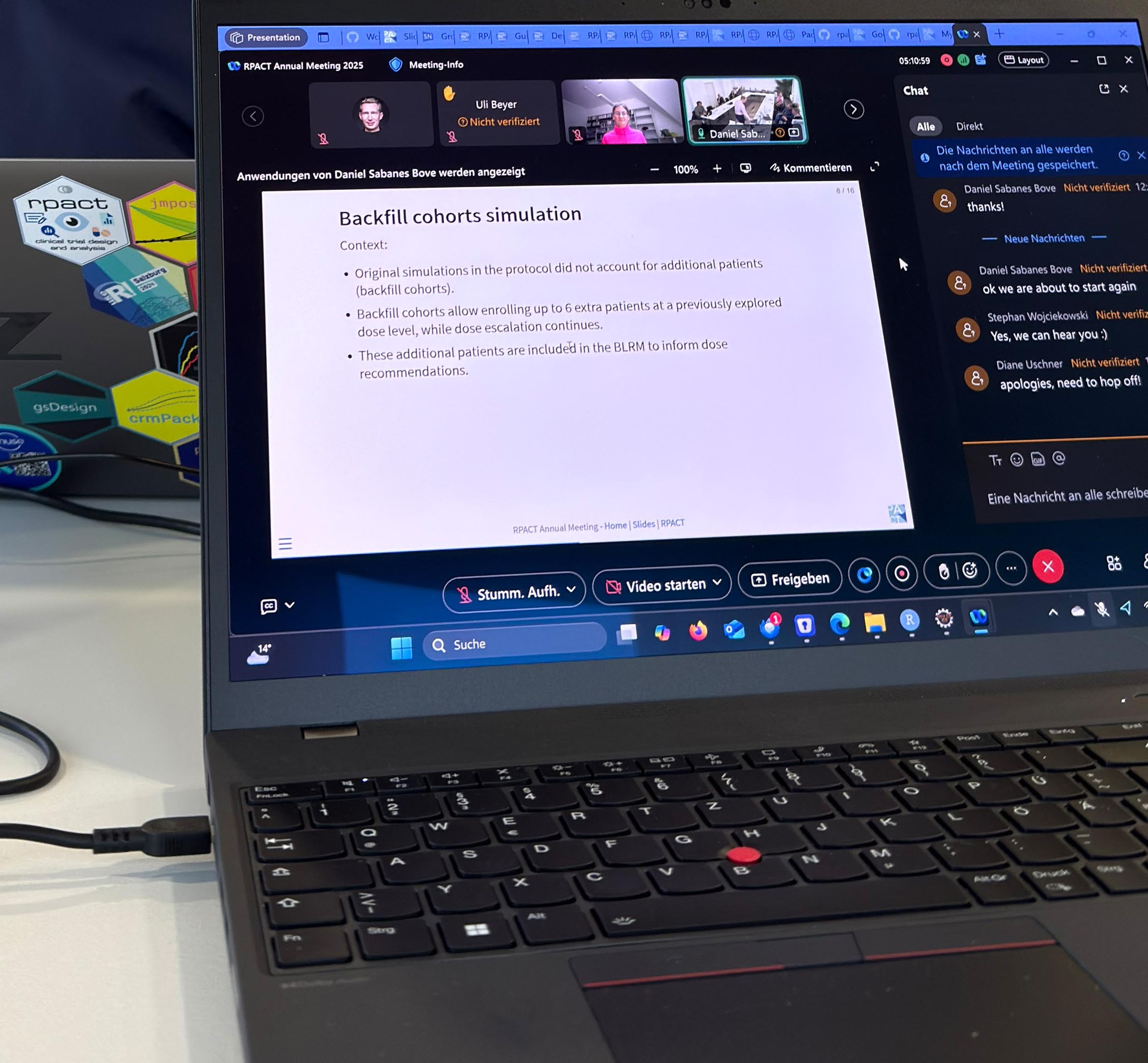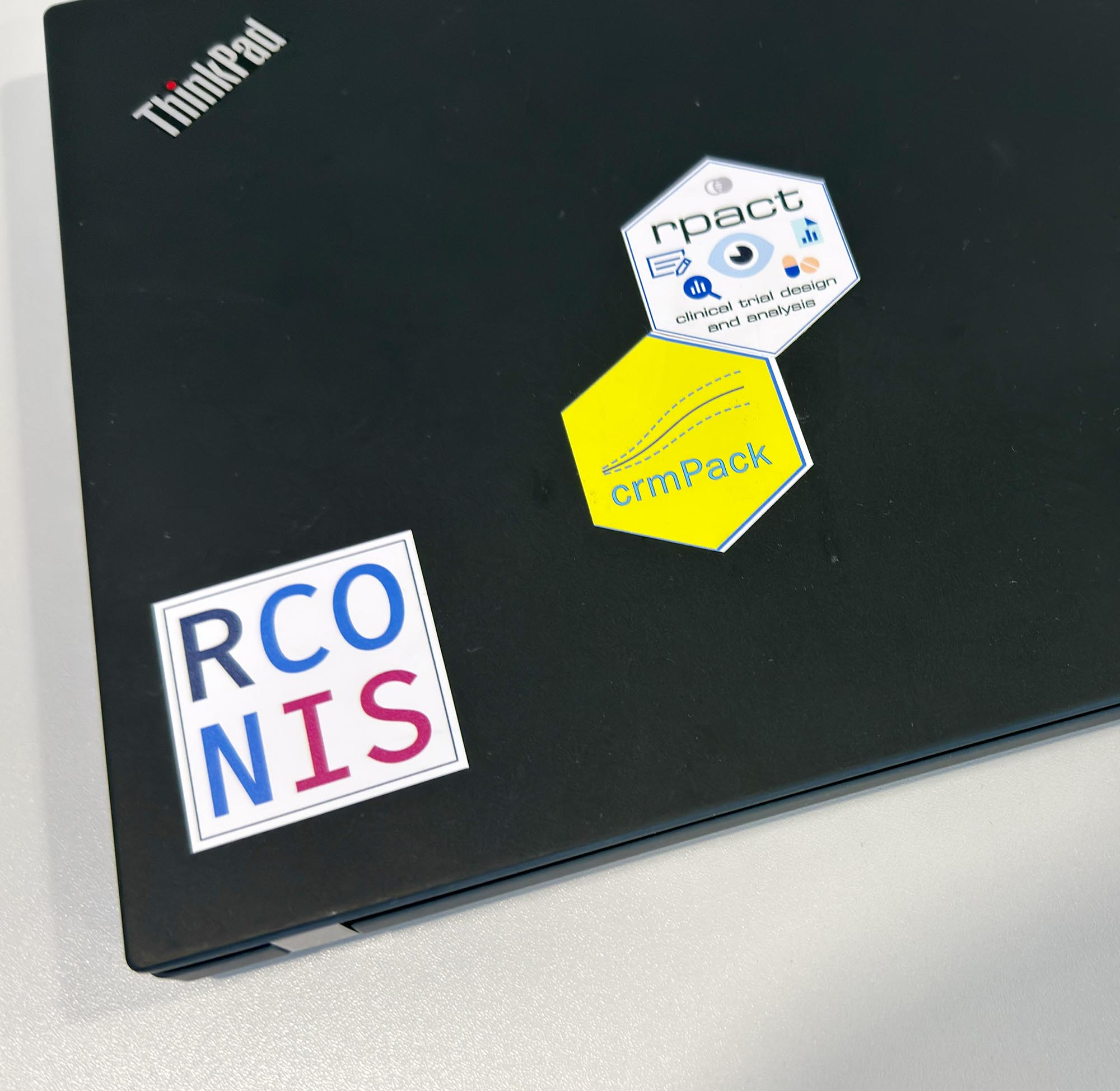
“Collaboration is the engine that powers innovation.” That spirit filled every corner of our 2025 RPACT Annual Meeting, held as a hybrid experience in Frankfurt and online. Here’s a guided tour through the stories, announcements, and conversations that shaped the day.
Setting the stage: RCONIS momentum and a growing team
We opened the meeting by revisiting the joint venture between RPACT GmbH and inferential.biostatistics GmbH—better known as RCONIS. After a year of collaboration, the team has supported clients across the development spectrum, from establishing new statistics teams to planning entire clinical programs. A special highlight: Daniel Sabanés Bové is joining Friedrich Pahlke and Gernot Wassmer as a partner at RPACT, further strengthening the bridge between software innovation and statistical consulting. We also announced the transition from RPACT GbR to RPACT GmbH, a natural evolution that adds legal robustness without changing anything for our customers.

RPACT activities: community, training, and automation
Our community keeps expanding: the RPACT User Group brings together leading companies across the industry, creating a vibrant forum for shared experiences. Over the past year we delivered 15 new trainings and workshops on three continents, from the Multiple Comparison Procedures conference in Philadelphia to the GMDS annual meeting in Jena. Behind the scenes, we continued to industrialize our processes with the internal rpact.dev and rpact.validator packages, which now streamline client-specific cloud deployments, URL re-branding, and validation workflows.


rpact releases: performance boosts and feature depth
Two CRAN releases — rpact 4.2.0 and 4.2.1 — headlined the software updates. Multi-arm simulations can now incorporate dose-response relationships via the new doseLevels parameter, while sample size tools handle unequal variances and optional conservative settings. Plotting upgrades bring futility and beta-spending views to life, and the new saveOptions()/resetOptions() functions make configuration management effortless.
We also reimagined package validation: unit tests now live in a dedicated repository, with testPackage() and setupPackageTests() providing installation qualification reports and easy access to the full test suite. The payoff? Faster CRAN checks and smoother releases. Release 4.2.1 introduced finer control over interim analyses through efficacyStops and futilityStops arguments.

RPACT Cloud and governance upgrades
Our DevOps investments delivered tangible benefits, from automated CI/CD pipelines for RPACT Cloud to publicly available policies and SOPs that increase transparency. RPACT Connect emerged as the central dashboard for customers, bundling training materials, validation documents, and shortcuts into the cloud ecosystem. Combined with download numbers that finally broke the 3,000-per-month mark on CRAN, the ecosystem is healthier than ever.
Looking ahead: co-designing the roadmap
Participants shaped the afternoon through an open discussion on future developments.
Discussion topics included strong user interest in extending rpact towards solutions for multiple endpoints (e.g., PFS and OS) and graphical testing approaches. Gernot mentioned that such features could in principle be implemented, but the topic is complex and likely time-consuming. As a first step, a new vignette could help users create individual solutions in R and rpact.
Further discussions focused on the benefits of an in-house installation of RPACT Cloud, such as enhanced data security, improved performance, environment variable customization, logging, and formal validation on company servers. Participants also highlighted that RPACT Cloud, compared to rpact, adds valuable functionality through design comparison tools and flexible plotting capabilities.
The key theme: we co-create the roadmap by balancing immediate user needs with long-term innovation.
crmPack: crowd-funding a new standard
The meeting’s second half spotlighted crmPack, the adaptive dose escalation workhorse maintained by a consortium spanning Bayer, Roche, Merck, and academia. To ensure sustainable development, we launched a crowd-funding service-level agreement (SLA) that mirrors the rpact model—covering support, documentation, validation, and training.
Daniel walked through the package’s modular architecture, competitive landscape, and usage statistics. A hands-on illustration showcased how crmPack visualises dose-escalation pathways, underscoring its flexibility for model-based and rule-based designs alike.
crmPack roadmap: from CRAN release to joint BLRM
With the SLA phase now underway, the team shared an ambitious roadmap:
- Tidy up and release a refreshed CRAN version by late November 2025.
- Deliver backfill cohort simulations by January 2026 to better mirror real-world protocols.
- Extend mixture prior distributions and introduce the joint BLRM for two-drug combinations by mid-2026.
- Publish validation documentation, exclusive vignettes, and enriched training resources.
Regular stand-ups with the community, transparent GitHub development, and priority support ensure that sponsors can shape every milestone.
Thank you for being part of the story
The 2025 Annual Meeting reaffirmed what makes this community unique: a relentless commitment to rigorous methods, open collaboration, and user-driven development. We are excited to continue building rpact, RPACT Cloud, and crmPack together with you—see you in the next workshop, stand-up, or release announcement!
